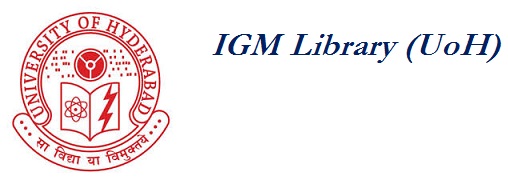Methods of statistical physics / Tomoyasu Tanaka.
Tanaka, Tomoyasu, 1919-| Call Number | 530.13 |
| Author | Tanaka, Tomoyasu, 1919- author. |
| Title | Methods of statistical physics / Tomoyasu Tanaka. |
| Physical Description | 1 online resource (xv, 293 pages) : digital, PDF file(s). |
| Notes | Title from publisher's bibliographic system (viewed on 05 Oct 2015). |
| Summary | This graduate-level textbook on thermal physics covers classical thermodynamics, statistical mechanics and its applications. It describes theoretical methods to calculate thermodynamic properties, such as the equation of state, specific heat, Helmholtz free energy, magnetic susceptibility and phase transitions of macroscopic systems. In addition to the more standard material covered, this book also describes powerful techniques, which are not found elsewhere, to determine the correlation effects on which the thermodynamic properties are based. Particular emphasis is given to the cluster variation method and a novel formulation is developed for its expression in terms of correlation functions. Although a basic knowledge of quantum mechanics is required, the mathematical formulations are accessible and entirely self-contained. The book will therefore constitute an ideal companion text for graduate students studying courses on the theory of complex analysis, classical mechanics, classical electrodynamics, and quantum mechanics. |
| Subject | STATISTICAL PHYSICS. |
| Multimedia |
Total Ratings:
0
02209nam a2200349 i 4500
001
vtls001598919
003
VRT
005
20230127111700.0
006
m|||||o||d||||||||
007
cr||||||||||||
008
230127s2002||||enk o ||1 0|eng|d
020
$a 9780511755675 (ebook)
020
$z 9780521580564 (hardback)
020
$z 9780521589581 (paperback)
035
$a (UkCbUP)CR9780511755675
039
9
$y 202301271117 $z santha
040
$a UkCbUP $b eng $e rda $c UkCbUP
050
0
0
$a QC174.8 $b .T36 2002
082
0
0
$a 530.13 $2 21
100
1
$a Tanaka, Tomoyasu, $d 1919- $e author.
245
1
0
$a Methods of statistical physics / $c Tomoyasu Tanaka.
264
1
$a Cambridge : $b Cambridge University Press, $c 2002.
300
$a 1 online resource (xv, 293 pages) : $b digital, PDF file(s).
336
$a text $b txt $2 rdacontent
337
$a computer $b c $2 rdamedia
338
$a online resource $b cr $2 rdacarrier
500
$a Title from publisher's bibliographic system (viewed on 05 Oct 2015).
520
$a This graduate-level textbook on thermal physics covers classical thermodynamics, statistical mechanics and its applications. It describes theoretical methods to calculate thermodynamic properties, such as the equation of state, specific heat, Helmholtz free energy, magnetic susceptibility and phase transitions of macroscopic systems. In addition to the more standard material covered, this book also describes powerful techniques, which are not found elsewhere, to determine the correlation effects on which the thermodynamic properties are based. Particular emphasis is given to the cluster variation method and a novel formulation is developed for its expression in terms of correlation functions. Although a basic knowledge of quantum mechanics is required, the mathematical formulations are accessible and entirely self-contained. The book will therefore constitute an ideal companion text for graduate students studying courses on the theory of complex analysis, classical mechanics, classical electrodynamics, and quantum mechanics.
650
0
$a STATISTICAL PHYSICS.
776
0
8
$i Print version: $z 9780521580564
856
4
0
$u https://doi.org/10.1017/CBO9780511755675
999
$a VIRTUA
No Reviews to Display
| Summary | This graduate-level textbook on thermal physics covers classical thermodynamics, statistical mechanics and its applications. It describes theoretical methods to calculate thermodynamic properties, such as the equation of state, specific heat, Helmholtz free energy, magnetic susceptibility and phase transitions of macroscopic systems. In addition to the more standard material covered, this book also describes powerful techniques, which are not found elsewhere, to determine the correlation effects on which the thermodynamic properties are based. Particular emphasis is given to the cluster variation method and a novel formulation is developed for its expression in terms of correlation functions. Although a basic knowledge of quantum mechanics is required, the mathematical formulations are accessible and entirely self-contained. The book will therefore constitute an ideal companion text for graduate students studying courses on the theory of complex analysis, classical mechanics, classical electrodynamics, and quantum mechanics. |
| Notes | Title from publisher's bibliographic system (viewed on 05 Oct 2015). |
| Subject | STATISTICAL PHYSICS. |
| Multimedia |

